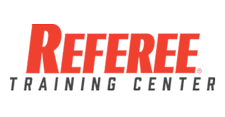By Bob Masucci
“To get something done, a committee should consist of no more than three people, two of whom are absent.”
Over the years, there has been a lot of humor shared, such as that quote from Robert Copeland, at the expense of committees. But in all seriousness, committees are essential to the efficient operations of any local officiating associations consisting of more than a handful of members.
Depending on your governance structure and your bylaws, committees will usually come in two forms: standing (or permanent) committees defined within your organization bylaws, and working (or ad-hoc) committees established to take care of a short-term issue and then disband.
Standing committees take care of ongoing or recurring items of interest, such as a finance committee, charged with keeping the books, approving expenses, etc. Ad-hoc committees are established by your board to assume responsibility for a one-time or short-term item, such as a picnic committee charged with the logistical planning and execution of your association’s annual family gathering.
For most local association boards, committees are defined to provide structures within which focused work takes place. A subset of association members assumes responsibility for some facet of the board’s work and then shares their results with the rest of the board. Besides just doing the work, they also assume leadership for all aspects of their responsibilities, including facilitating any board discussions about the issues, educating the membership at-large about their area of focus, and defining how they will do and report their work.
Properly used, committees also allow members to bring their existing expertise to bear on areas within the committee’s purview and build knowledge in a specific area while doing the background work necessary for an appropriate collective decision. They also develop members’ leadership skills in a specific aspect of the board’s work and potentially offer those members an opportunity to be considered for board membership sometime down the road.
Committees are also useful because their smaller size may allow them to be more efficient than the whole board when it comes to dealing with tactical matters. Despite this advantage, a committee still must operate according to its charter and in support of your association’s overall mission — not to achieve an agenda of its own.
Committees also come with their own challenges. Those challenges should be thoroughly understood by your board so that committee membership can be determined correctly. First, a committee has no authority of its own, since any authority to rule and determine policy lies with the board itself. Secondly, because a committee’s work takes place outside of your board’s regular meeting, it will most likely proceed without the awareness or involvement of board members. Those two features make the types of work undertaken by committees appropriate for detail-oriented people who can take direction and ideas and run with them. Committee membership, and especially committee leadership, is not for the faint of heart or those requiring constant handholding.
A committee is formed to handle the detailed work necessary to conduct your association’s business. While your board is charged with upholding your mission, determining policy, considering and making highly impactful decisions, and envisioning your future, a committee’s job is traditionally focused on the tactical aspects of your association’s operations. So, for example, your board may want to consider the pros and cons and costs of setting up a formal observation and evaluation program. After that consideration, they may decide to move ahead — a strategic decision. Now a committee can be set up to do the research on how other organizations may have structured their programs, develop training and other materials, put together a straw proposal for your own program, and prepare a presentation for the membership on the new program. Those are the tactical aspects that are the heart of committee work.
But the question of why form committees at all is a valid one for your association to consider. Two very important factors to contemplate are:
1. What’s the purpose of a specific committee, and what authority are you willing to cede to it? If you decide to set up, for example, a training committee, the name will probably hint at what responsibilities might fall within its purview, but that isn’t enough. You must be unambiguous in defining precisely what this committee is charged with, what deliverables the board will expect, and under which limitations the committee will operate. All of that should be put in writing for future reference by both the committee and the board. Failing that, all too many committees will stray from their original charter and appropriate other roles and duties, possibly intruding on the functions of another committee or on the board itself. And, unless the board is willing to delegate to that committee the authority to carry out its charter, establishing that committee might just be setting it up for failure.
2. Do you have enough meaningful work for a committee to undertake? Committees for committees’ sake won’t cut it. Committee meetings require devoted time, energy and committed members. Ineffective and incomplete committee charters can burn out frustrated volunteers if there is no important work to be accomplished. It will be a disservice to those volunteers if they are forced to waste time stumbling around trying to figure out what they should be doing. If your board can’t clearly articulate what specifically is expected of a committee, don’t form one!
Take the time necessary to determine what you need from your committees. That is key. Don’t ever let the following quote from Milton Berle describe your board’s approach to committees: “A committee is a body that keeps minutes and wastes hours.”
Bob Masucci is an official from Clinton Township, N.J., with more than 30 years of officiating experience.




